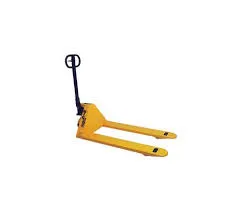


The Importance of Anti-Fall Arresters in Occupational Safety
In various industries where workers are exposed to the risk of falling from heights, ensuring their safety becomes a paramount concern. Anti-fall arresters, also known as fall protection systems or fall arrest devices, play a critical role in safeguarding personnel working on rooftops, scaffolding, and other elevated platforms. Understanding the significance, types, and proper usage of these devices is essential for promoting occupational safety and health.
What Are Anti-Fall Arresters?
Anti-fall arresters are safety equipment designed to prevent workers from falling during their tasks. These devices can include harnesses, lanyards, anchor points, and various types of connectors that work together to create a secure system to catch a person if they fall. By absorbing the energy of a fall and preventing sudden stops, these systems considerably reduce the risk of serious injuries or fatalities.
Types of Anti-Fall Arresters
There are several types of fall protection systems available, each suited for different applications and environments
. The main categories include1. Personal Fall Arrest Systems (PFAS) These systems involve the use of a full-body harness connected to a lanyard secured to an anchorage point. PFAS is commonly used in construction and maintenance work on rooftops.
2. Guardrails Fixed guardrails provide a physical barrier that helps prevent falls on ledges, scaffolds, and walkways. They are considered a passive form of fall protection, requiring no active participation from workers.
3. Safety Nets These nets are installed below the work area to catch falling workers. Safety nets are particularly useful during construction or renovation projects where workers may be at risk of falling from considerable heights.
4. Rescue Systems While not a fall prevention device, rescue systems are essential for retrieving individuals who have fallen and remain suspended in their harnesses. These systems ensure that swift action can be taken to assist a worker in distress.

Why Are Anti-Fall Arresters Necessary?
The necessity of anti-fall arresters cannot be overstated. According to the Occupational Safety and Health Administration (OSHA), falls are one of the leading causes of fatalities in the workplace, particularly in construction. Without proper fall protection measures in place, workers are at a high risk of sustaining severe injuries, such as fractures, head trauma, and even death.
Moreover, the financial implications of falls can be staggering for employers. Beyond the costs associated with worker compensation claims and medical expenses, businesses may also face penalties from regulatory bodies for failing to comply with safety standards. Investing in anti-fall arresters not only protects workers but also safeguards the company’s financial health and reputation.
Best Practices for Using Anti-Fall Arresters
1. Training Comprehensive training should be provided to all employees who work at heights. Workers should be educated on how to properly use and maintain their personal fall arrest systems to maximize effectiveness.
2. Inspection Regular inspections of fall protection equipment are critical to ensuring their functionality. Any worn or damaged equipment should be promptly replaced.
3. Maintenance Implementing a maintenance schedule for safety equipment ensures that all systems remain in optimal condition, ready for use at a moment's notice.
4. Risk Assessment Conducting thorough risk assessments helps identify potential hazards associated with working at heights, allowing for tailored fall protection strategies to be developed.
Conclusion
Anti-fall arresters are an indispensable part of workplace safety in industries where working at heights is unavoidable. By understanding their importance, types, and best practices for usage, employers and workers can significantly reduce the risks associated with falling. Prioritizing fall protection not only ensures compliance with safety regulations but ultimately fosters a culture of safety that values the well-being of all employees. In an era where workplace safety is increasingly emphasized, the implementation of effective anti-fall arresters is not just a good practice; it is a moral obligation.



